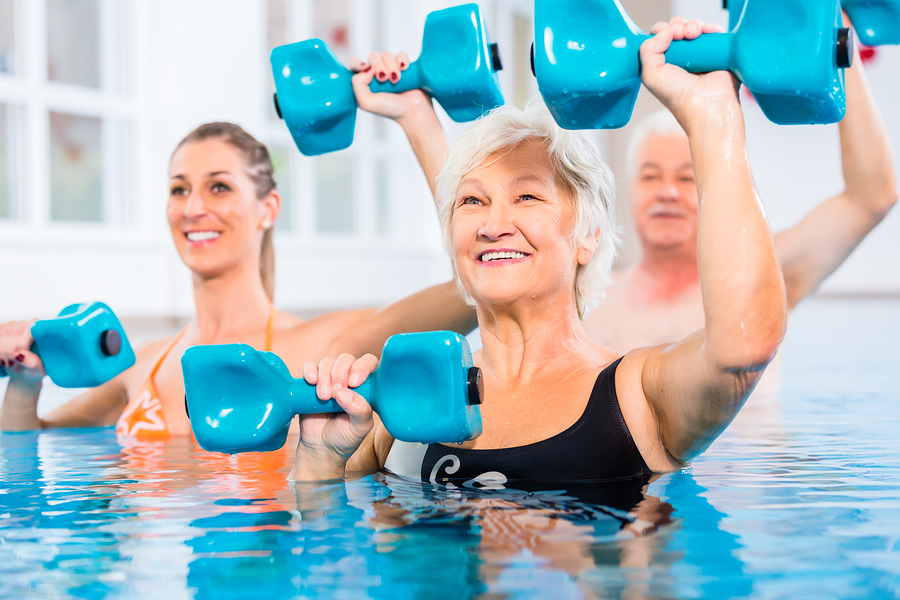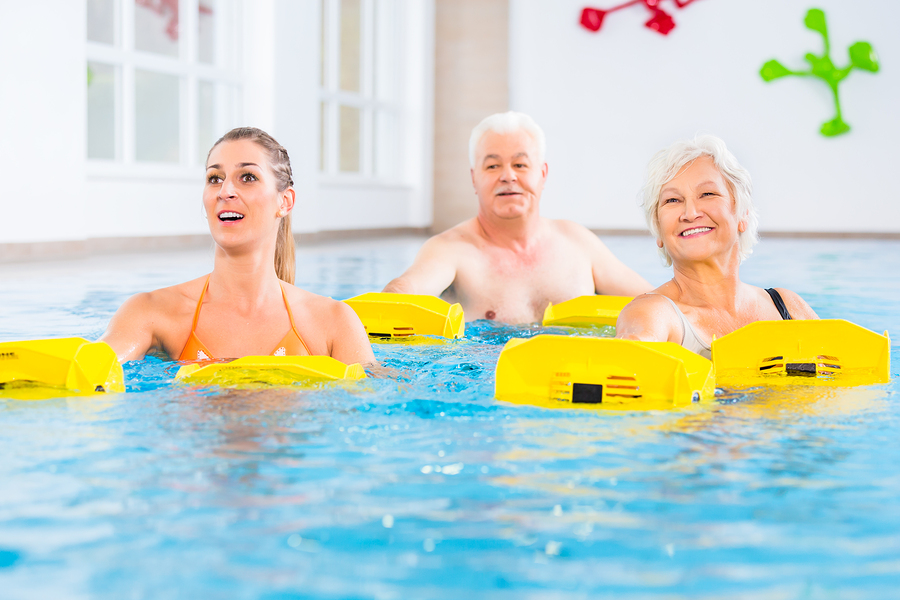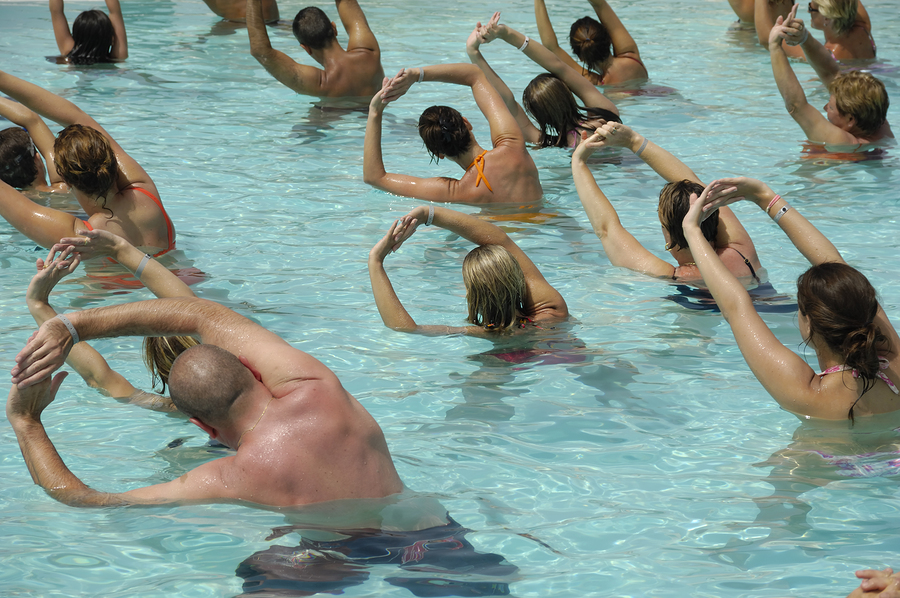- Make It Yourself Lavender Heart-Shaped Bath Bombs!
- 20 Things You Never Knew About “Down There”
- 12 Best Foods For Those Suffering From Arthritis Pain
- 12 Personal Hygiene Mistakes Almost Everyone Makes (Mom Never Told You About #4!)
- 15 Medicinal Plants And Herbs From The Cherokee People
- 12 Mind-Blowing Benefits Of Drinking Coconut Water During Pregnancy
- 12 Outstanding Winter Foods That Won’t Fatten You Up Like A Christmas Turkey
Why You Need To Start Doing Water Workouts

Photo credit: bigstock.com
Most people think of jogging, barbells and treadmills when they hear the word exercise. However, new studies have shown that swimming and aquatic training may be the most effective form of exercise you can perform- and with less effort than traditional, land-based training.
Water workouts are different than out of water training for several reasons. First, the water provides additional resistance, about 12 to 14 times more than moving on land. This means you have to exert more force to move. In many ways, it’s like turning your whole environment into a weight set instead of merely lifting weights and putting them down. But the resistance works both ways. Since water is 800 times more dense than air, it doesn’t just make it more challenging to move, it also supports your weight. The water reduces the effect of gravity on your body, effectively “reducing” your bodyweight by 90%. This allows your body to move in different ways that are unavailable on land.
1. Water vs. Land Exercise
Training in water is different and in many ways, more beneficial than training on land. In addition to the added resistance and buoyancy mentioned above, there is also the issue of joint impact. While exercises like running are good for cardiovascular health, they put a lot of stress on the joints from the impact of the foot hitting the ground. The phrase “runner’s knees” exists for a reason. Over time, high-impact training can wear down the knees, ankles and other joints. Water-based workouts however are zero-impact exercises. With the water supporting most of your bodyweight, you don’t actually propel yourself off a solid surface in order to move. No stress is placed on the bones, which makes water workouts a good choice for those with joint or back pain. And because you’re there’s no impact and you’re not lifting weights, there is a reduced risk of injury. Swimming and water workouts also force you to use your entire body, engaging muscle groups which are more difficult to target with traditional workouts.
Now because the water is supporting part of your weight, it also means you don’t have to work as hard, so you may not be burning as many calories doing a 30 minute water workout versus 30 minutes on a stationary bike. This is something to keep in mind if burning calories is your greatest concern.
Continue to Page 2

Photo credit: bigstock.com
2. Exercises to Try
The most obvious water-based form of training is swimming. If you’re regular swimmer, it’s a safe bet that you’re healthier or on your way to becoming healthier than 80% of the population. But swimming can be a very demanding form of exercise and can turn some people off who are averse to physical activity to begin with. “Vertical Training” like water aerobics may make for a smoother transition for such people. Since you’re standing or floating rather than swimming it won’t exhaust you as quickly- but that doesn’t mean it’s easy. Even athletic individuals can get an excellent workout from water aerobics classes. Resistance bands can be used in water to provide more resistance for strength training.
More advanced forms include deep water running, in which the practitioner actually “runs” in the water with the aid of a flotation belt. This has proven highly effective in athletic training, as well as physical rehabilitation.
Continue to Page 3

Photo credit: bigstock.com
3. Pool or Pond?
Most people who swim regularly as part of an exercise program do so in a pool, and most water training classes are offered in pools as well. There are both advantages and disadvantages to training in a pool vs a natural body of water. For starters, pools are usually maintained at a certain temperature, and indoor ones are often open year-round, while outdoor bodies of water are subject to the seasons and weather. Pools are also often cleaner. Wearing water shoes is recommended when training in a natural body of water due to the substrate at the bottom (this will not be a problem in a manmade pool.)
However, artificial pools also are filled with chlorine and disinfectant agents, while natural ponds, lakes and oceans are not. These chemicals do help to disinfect the water, but pose different health risks of their own. In addition to mere eye irritation, chlorine can react with organic substances like leaves, skin particles and hair to form disinfectant byproducts (DPBs) which have been linked a variety of health problems. If you own a pool, consider using an ozone-system to remove bacteria from the water (you may still need to use chlorine periodically to prevent buildup of algae).
This doesn’t mean you should swear off pools completely, just take sensible precautions and shower off afterward. The benefits of water-based training will outweigh whatever risks there are from pool chemicals, as long as you take precautions to reduce exposure to them.
READ ALSO: 10 Mental Tricks for a More Effective Workout
Whichever option you chose, you can get fantastic results from training in a pool or natural body of water. Try adding water exercises to your workout regimen and see the incredible difference it can make in your strength and cardiovascular health.
References:





























